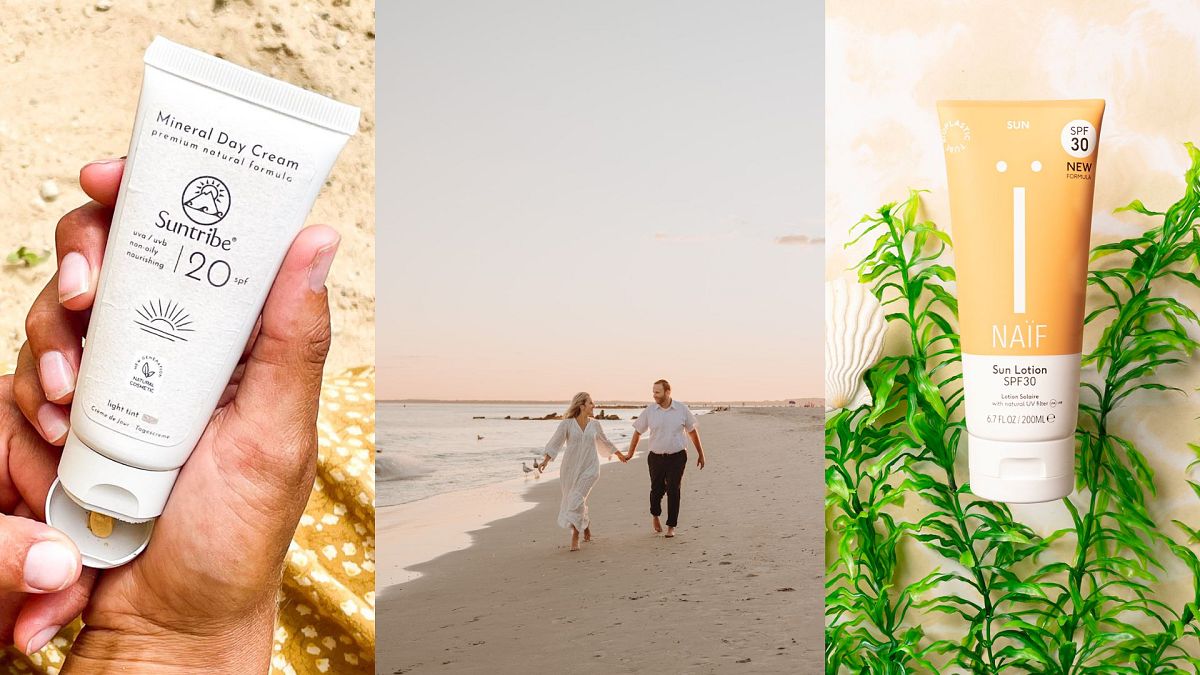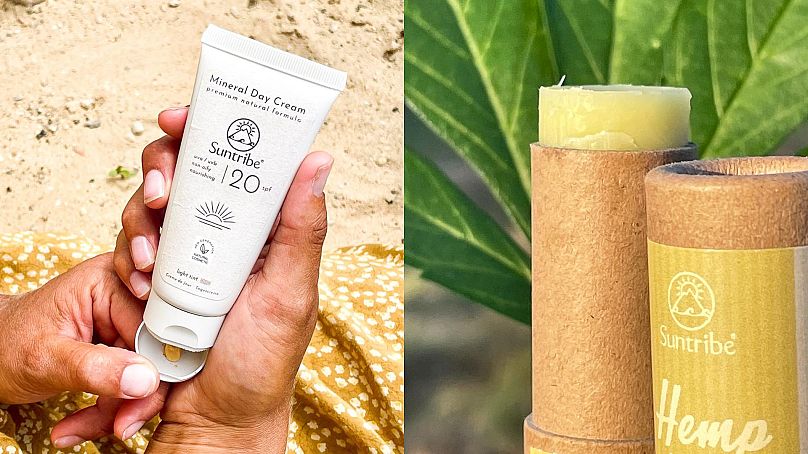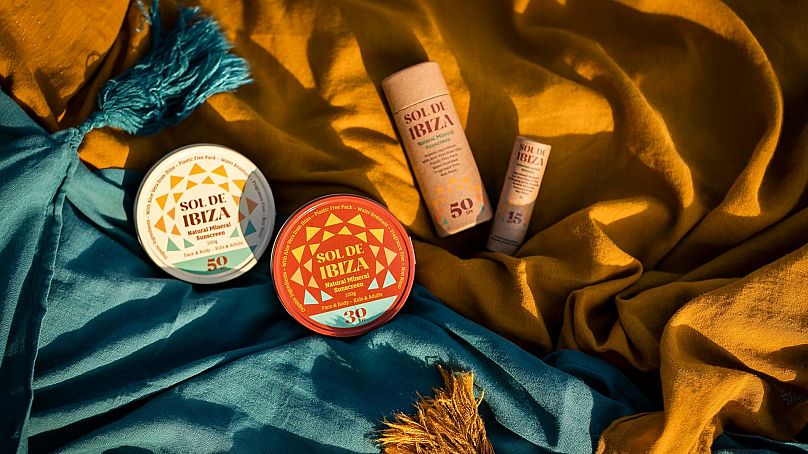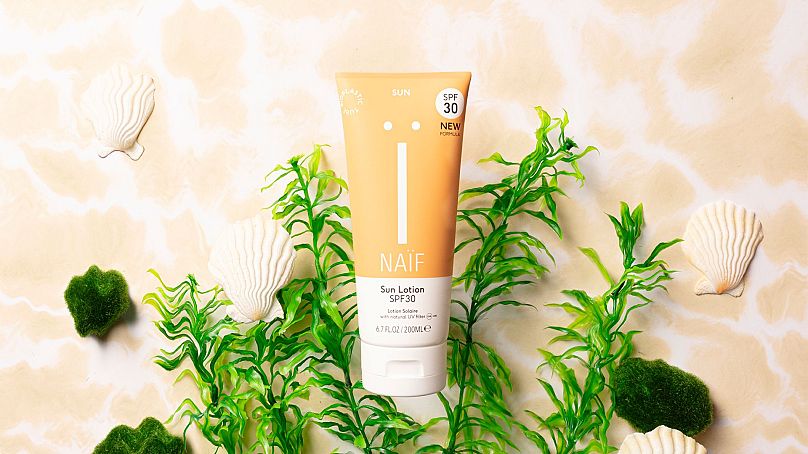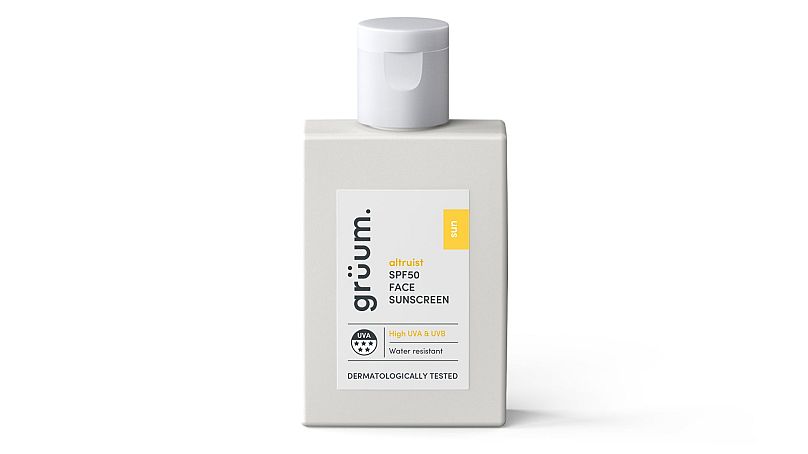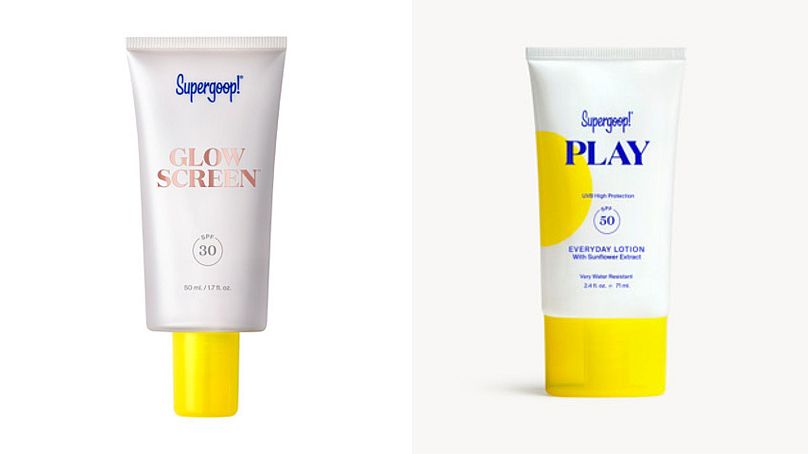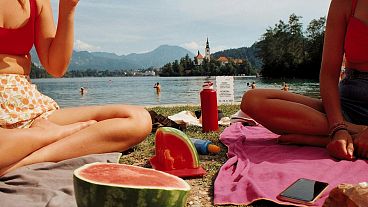If you’re heading into the sun, you need to protect your skin - but not all products are created equal. Here are some of the best natural sunscreens to try.
Ever fallen asleep on the beach, only to wake up a concerning shade of red?
Sun cream is a holiday essential - a fact many of us have learnt the hard way.
With the frequency and intensity of heatwaves increasing all over Europe, it’s quickly becoming an everyday staple. Indeed, some experts recommend wearing SPF50 sun cream on your face year-round, whatever the weather.
But do you really know what you’re putting on your skin? Sun protection is vital - but not all products are created equal.
Sun cream protects the wearer from harmful ultraviolet radiation, preventing the development of dangerous melanoma. But many conventional creams contain potentially harmful chemicals.
According to American studies, common ingredients like oxybenzone and homosalate absorb into the body after just one use, and can be detected on the skin and in the blood several weeks after application.
Oxybenzone is perhaps the most troubling ingredient. It can irritate the skin and act as an endocrine disruptor. In one study, adolescent boys with higher oxybenzone measurements showed significantly lower total testosterone levels; in another, women exposed to the chemical reported shorter pregnancies.
The European Commission recently reassessed its advice on the use of oxybenzone and homosalate, proposing a concentration limit of 2.2 percent and 1.4 percent for homosalate.
Whereas US sunscreen manufacturers are legally allowed to use these two chemicals at concentrations up to six and 15 percent, respectively.
Sun cream saves millions of lives every year. But it’s worth checking what’s in yours.
Sun cream: Check the ingredients list for these chemicals
If you don’t want to have to check ingredients lists before you buy, opt for a mineral or natural sun cream.
Instead of absorbing the sun’s rays like chemical sun cream, mineral sun cream creates a physical barrier against UV radiation, blocking it completely. Chemicals like oxybenzone, avobenzone, octinoxate and homosalate are replaced by minerals like zinc or titanium oxide.
Because these creams don’t absorb into the skin, they’re more obvious than their chemical counterparts, sometimes leaving behind a white residue.
Natural sun creams use ingredients from plants to block and scatter the sun’s rays. But without a mineral component, these do not effectively block the sun’s rays - so be sure to pick one that contains titanium oxide or zinc.
Europe is home to many companies trying to make sunscreens safer. By shopping with them, you’ll be saving on emissions as most are manufactured and shipped from within the continent.
Here are some of the most popular products, as reviewed by Euronews journalists.
Suntribe
Suntribe is a Swedish company founded by three outdoor-loving friends who were “tired of the old and overly commercial ways of making sunscreen.”
They claim their products are “worry-free” because they don’t use synthetic chemicals, perfumes or preservatives. They use non-nano zinc oxide as the UV filter.
Interestingly, Suntribe’s products don’t go above SPF30. This, the company says, is because SPF50+ filters out 98 per cent of UVB radiation, while SPF30 blocks out 96.7 per cent of UVB.
“The difference in sun protection between SPF 30 and SPF 50 is only 1 per cent,” they claim.
“This means that SPF 50 sunscreens do not offer significantly more protection than SPF 30 sunscreens and can mislead people into thinking they are more protected than they actually are.
Suntribe All Natural Mineral Day Cream SPF 20
This has quickly become my favourite day cream. I have the ‘light tint’, and although it comes out of the tube a slightly alarming shade of orange, it’s colourless once absorbed. It has a liquidy texture and feels a bit chalky when I’m rubbing it in - but it absorbs into the skin quickly, then I forget that I’m wearing it.
The downside of this product is that the packaging advises you to re-apply it every two hours, more regularly than most sunscreens. But follow their advice - I didn’t, and caught the sun after sunbathing in 30 degrees celsius heat for an afternoon. But the cream has provided perfect protection otherwise.
Suntribe All Natural After Sun Balm Eucalyptus & Jojoba and All Natural Body Butter Coconut & Argan
If you want glowing skin, these are the perfect products as they give your skin a lovely shine. But as someone who prefers cosmetics that you forget you’re wearing, they weren’t right for me.
The texture is similar to Vaseline and I didn’t like the way it sat on my skin rather than sinking in - I left the beach very sandy.
I did experiment with different amounts and found that the less I used, the less sticky it felt on my skin. A teaspoon’s worth was enough to cover my whole body.
Suntribe All Natural Radical Moisture Hemp Lip Balm
This feels lovely on your lips and absorbs nicely. But I wouldn’t say it’s ‘radically’ moisturising. Note that it doesn’t have any SPF so shouldn’t be used when outside.
Sol de Ibiza
Sol de Ibiza was started on the famous isle by an Italian founder. He set out to create a chemical-free sunscreen that would be “good for kids, adults and the environment.”
Like most natural sunscreens, Sol de Ibiza uses zinc oxide to protect from UVA, UVB and blue light. Their products also contain cocoa butter, shea butter, aloe vera and calendula which are anti-inflammatory.
Sol de Ibiza Natural mineral sunscreen SPF30 and SPF50
Packaged in a plastic free tin or as a stick, these products are good for the planet as well as your skin.
However, the consistency of Sol be Ibiza’s sunscreens is unlike any I have tried before. In both the tins and the tube they come as a solid block, similar to soap. The issue with this, of course, is that without water soap is no use. The packaging instructs you to allow the cream to warm to skin temperature. I tried doing this and got nowhere with it, I just had a lump of the cream sticking my fingers together.
The only way I found that worked was to break up the block in the tin then rub a ball of it between my fingers. It still didn’t spread easily on my skin but I could rub it in with some effort. t left a white sheen on my skin and on my black bikini. Those who use sunscreens that are designed to stay on for hours in the water, like surfers, are probably used to this sheen. But I imagine most people would be irritated by it.
I spoke to Belen Eledo, marketing consultant at Sol de Ibiza, who explained that the cream is so hard because zinc oxide is the main ingredient. This provides excellent protection from UVA rays, but it’s a hard mineral. On the plus side, the product is waterless, which meansit take years to expire because bacteria breed in water.
Belen confirmed that breaking it up in the tin is the right approach, then put a small ball of the product in your palm and spread it over your body. She also said that the company is working on a new formula that is more soft and won’t leave the white sheen.
Naif
Naif (pronounced like naive with a f on the end) is a Dutch brand started by two friends when they became dads. They initially set out to make natural skincare products for babies and kids, but later added products for all age groups. They use natural alternatives to synthetic ingredients whenever possible, and promise that their products“give the same, if not better, results as the non-natural variants.”
Their sunscreens don’t contain any oxybenzone, mineral oils, parabens or silicones. They’re also ocean-friendly as they’re non-nano and free from microplastics, plus vegan and free from the 26 most common allergens.
Naif Sunscreen Cream SPF30
This was my favourite sun cream of the lot. It has the consistency of thick moisturiser and is quick and easy to apply. It does leave a slightly greasy residue behind but I’ll take that for the chemical-free benefits.
Naif Cooling Aftersun
This has the consistency you would expect of after sun, spreadable with a slightly gel-like texture. It was absorbed easily and left my skin feeling noticeably smoother. It does have quite a strong fragrance. I liked it, but some people might find it off-putting.
Gruum
Gruum is a British brand “inspired by Scandinavian ideals”. Its founders - four friends from Manchester -set out to create simple products that only contain quality ingredients. They also wanted to do away with the his and hers divide in the toiletries aisle, so all Gruum products are suitable for anyone of any gender.
SPF50 UVA Dermatologist Face Sunscreen
This product had the most ‘normal’ texture of all the sunscreens I tried. This is probably because it has chemical ingredients that are in standard sunscreens and that some say are damaging, such as benzyls. However it doesn’t contain artificial colours, synthetic fragrances, parabens, sulphates, SLS, EDTA or petrochemicals. Despite the ‘face sunscreen’ lable,it worked perfectly on my body too, was very easily absorbed and gave good protection.
I also like the unusual bottle shape. It's flat and about the size of two credit cards alongside each other. It might be an optical illusion but the flat shape made it feel like it took up less space in my luggage, which is always a win.
Supergoop!
I tried three of Supergoop!’s products, the Glowscreen SFP30, the Play SPF50 and the Glowstick SFP50.
Supergoop! Play
While the chic, simple branding and name of the Supergoop! Play does make it look suspiciously like lube, this cruelty free formula is a great everyday sunscreen.
It’s light, non-greasy and has a subtle lemon scent. It feels like a really nice moisturiser that leaves your skin feeling soft and just happens to also protect your skin. and be super water resistant. It’s also packed with sunflower, rosemary and rice antioxidants to shield against the impact of pollution, and is extremely water resistant.
I’ve got the 71ml tube which is handy to slip in your bag but if you need sunscreen for the whole gang, it’s also available in a large 532ml pump bottle.
Supergoop! Glowscreen
For me though, the Glowccreen SFP30 is a standout product.
Don’t be alarmed by the fact it’s brown when you first open it - his sunscreen blends perfectly into your skin and the pearlescent formula leaves your face glowing. My skin has genuinely never looked so good.
The formula uses niacinamide to soothe, soften and tighten pores.ea lavender offers antioxidant protection and cocoa peptides guard skin from the damaging effects of free radicals.
You can use this product as a primer or highlighter too. Personally, I really like to wear it as the only product on my skin during the day if I’ve got social plans. I can ditch foundation andtinted moisturiser knowing that my skin is protected and I look great. It also comes in two different colours if you want a deeper glow or a lighter dewy finish.
Reduce the environmental impact of your sunscreen
When choosing a sunscreen, it’s important to also consider its environmental impact.
Natural mineral sunscreens are also less likely to cause environmental damage. Scientists have found that corals absorb oxybenzone from chemical sunscreen and convert it into phototoxins molecules. These become harmful when exposed to sunlight, eating away at the reef.
You can also reduce your sunscreen’s environmental footprint by being mindful of your plastic use. Many products are available in 100ml so you can travel with them in hand luggage. This removes the need to buy sun creams in plastic bottles at your destination, which is an expensive and wasteful habit as they’re usually thrown away before you fly home.
